George M. Low assumed the position of Acting NASA Administrator on Sept. 16, 1970, following the resignation of Administrator Thomas O. Paine. Paine had submitted his letter of resignation to President Richard M. Nixon on July 28, effective Sept. 15. He returned to the General Electric Company for which he worked when President Lyndon B. Johnson named him Deputy Administrator in January 1968. Low brought an outstanding aeronautical engineering education from the Rensselaer Polytechnic Institute in Troy, New York, and 20 years of aerospace experience to his position leading NASA.
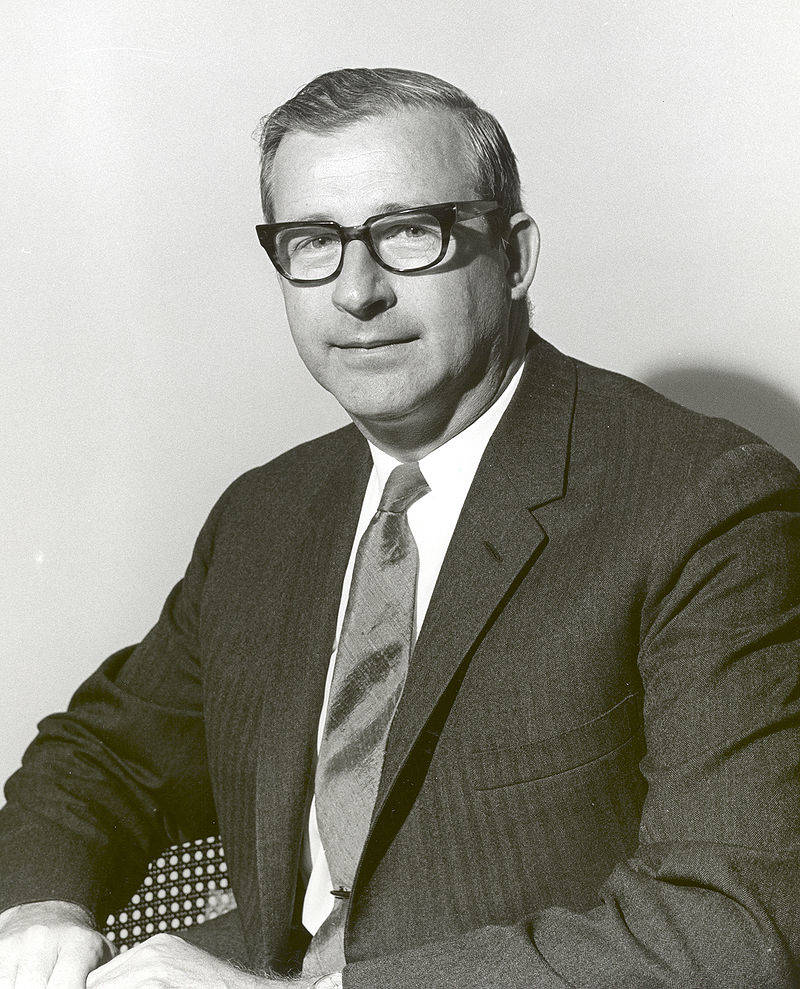
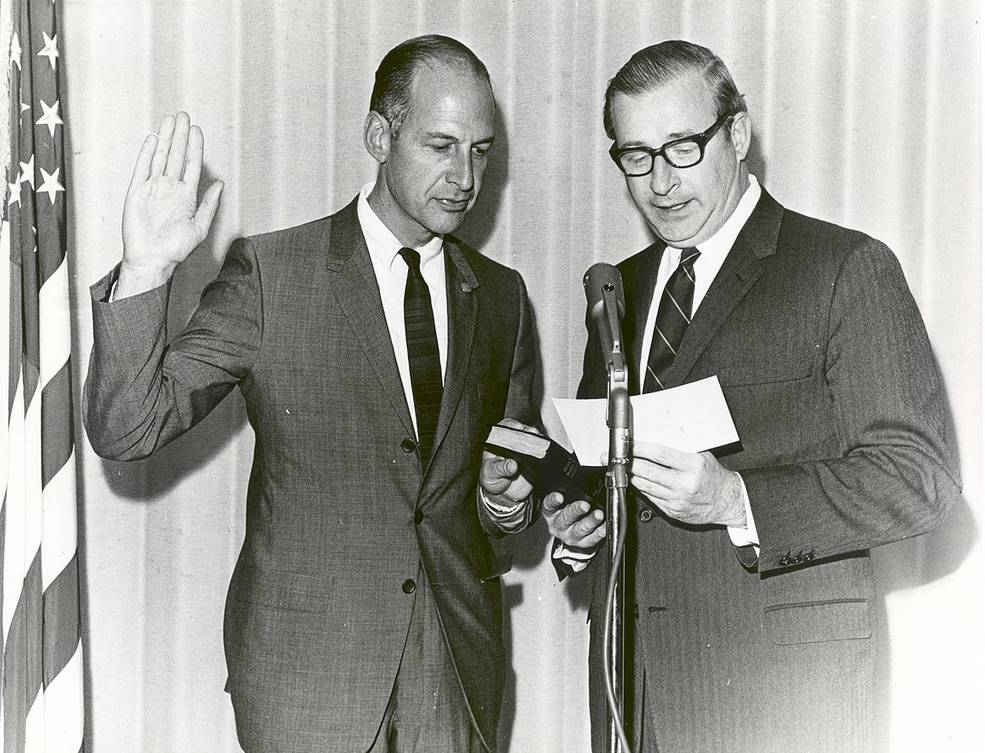
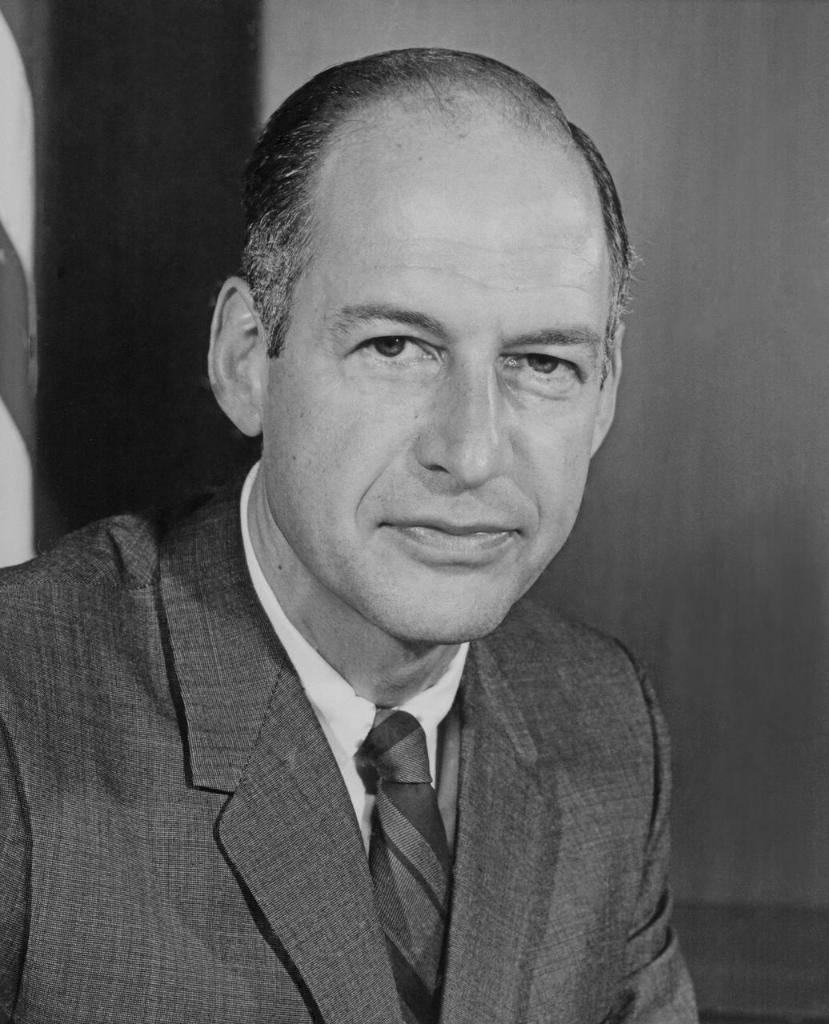
Left: NASA Administrator Paine. Middle: Paine swearing Low in as Deputy Administrator. Right: Acting NASA Administrator Low.
Low joined the National Advisory Council for Aeronautics in 1950 working at the Lewis Flight Propulsion Laboratory, now NASA’s Glenn Research Center in Cleveland, Ohio. Soon after NASA’s formation in October 1958, Low transferred to the agency’s Headquarters in Washington, DC, to serve as the Chief of Manned Space Flight to oversee the development of projects Mercury, Gemini, and Apollo. In February 1964, Low transferred to the Manned Spacecraft Center, now NASA’s Johnson Space Center in Houston, where he first served as the center’s Deputy Director. In April 1967, following the Apollo 1 fire, Low was named as the manager of the Apollo Spacecraft Program Office responsible for implementing the changes to the Apollo spacecraft as a result of the accident to make it safe once again for spaceflight. In August 1968, Low developed the bold idea of sending Apollo 8 on a lunar orbit mission, a decision that helped ensure that NASA met President John F. Kennedy’s goal of landing a man on the Moon before 1970. President Nixon nominated Low as the Deputy NASA Administrator and he assumed that role in December 1969. Low continued as Acting Administrator until April 27, 1971, when James C. Fletcher assumed the position of NASA Administrator, and continued as Deputy Administrator until June 5, 1976, when he retired from NASA.
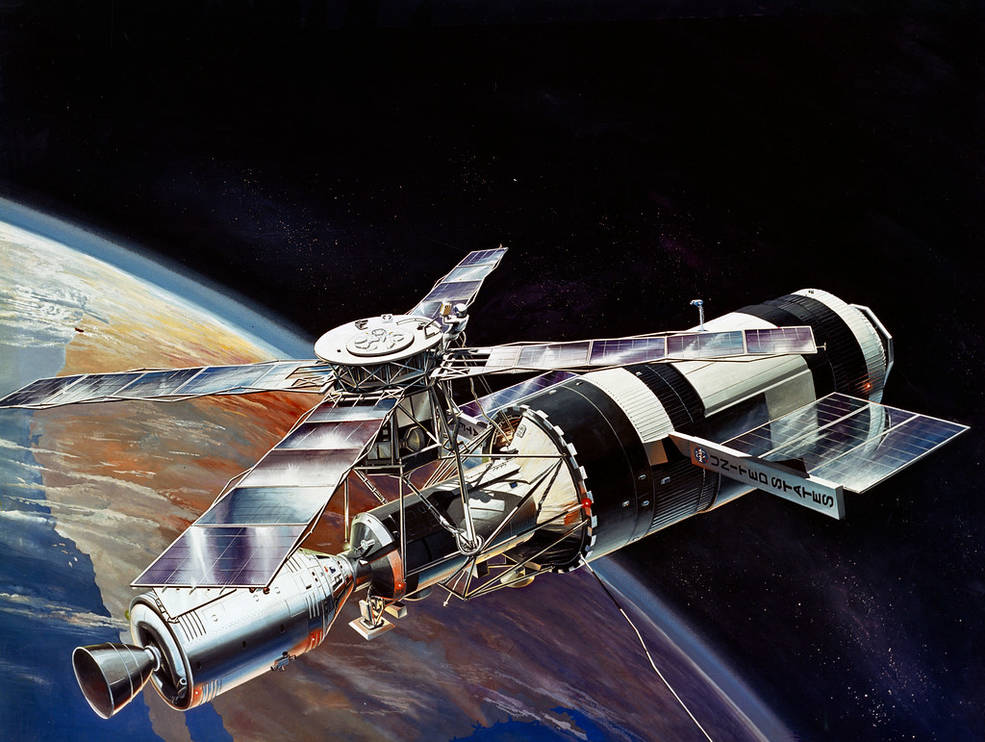
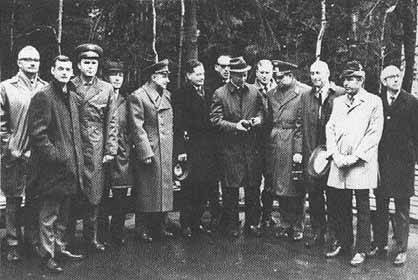
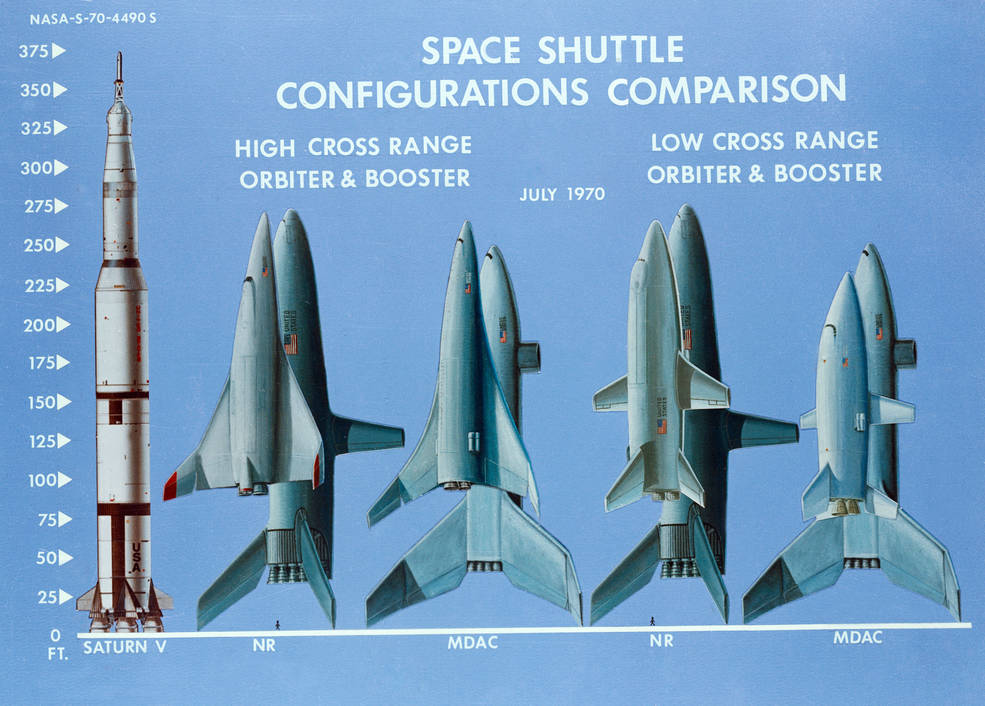
Left: Illustration of Skylab in orbit. Middle: NASA delegation in Star City outside of Moscow in October 1970. Right: Concepts for a reusable space shuttle from July 1970.
In September 1970, NASA was an agency in transition. Facing budget reductions, Paine cancelled two more Apollo flights in addition to the cancellation of Apollo 20 in January. Recovery from the Apollo 13 accident and implementation of the review board’s recommendations were well underway preparing to fly Apollo 14 in January 1971. Although the end of the Apollo program was approaching, new opportunities lay ahead. NASA was hard at work on its first space station, Skylab, then planned for launch in 1972. Working with his Soviet counterparts, Low accepted their invitation to send a high-level NASA delegation to Moscow in October 1970 to discuss possible cooperation in space, in particular a common docking system that could be useful in rescuing stranded astronauts and cosmonauts. That meeting set the stage for what eventually became the Apollo-Soyuz Test Project and the first joint US-USSR space mission in July 1975. After NASA established a Space Shuttle Program Office in February 1970, work was underway to develop a reusable space transportation system, a program approved by President Nixon in January 1972.
News events from around the world in September 1970:
Sept. 4 – Marxist Salvador Allende narrowly wins Chile presidential election
Sept. 11 – Ford Motor Co. introduces the Pinto
Sept. 12 – Supersonic airliner Concorde lands at London’s Heathrow airport for the first time
Sept. 13 – New York holds its first marathon, won by Gary Muhrcke in 2:31:38
Sept. 19 – “The Mary Tyler Moore Show” premieres on CBS
Sept. 21 – “Monday Night Football” premieres on ABC
Sept. 24 – Soviet Luna 16 lands back on Earth after completing the first robotic lunar sample return
Sept. 28 – President Gamal Abdel Nasser of Egypt dies, succeeded by Anwar al-Sadat
John Uri
NASA Johnson Space Center


























